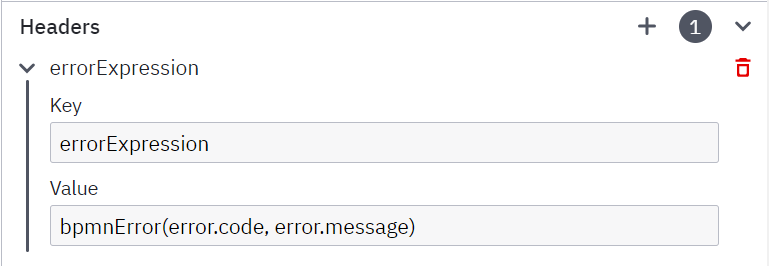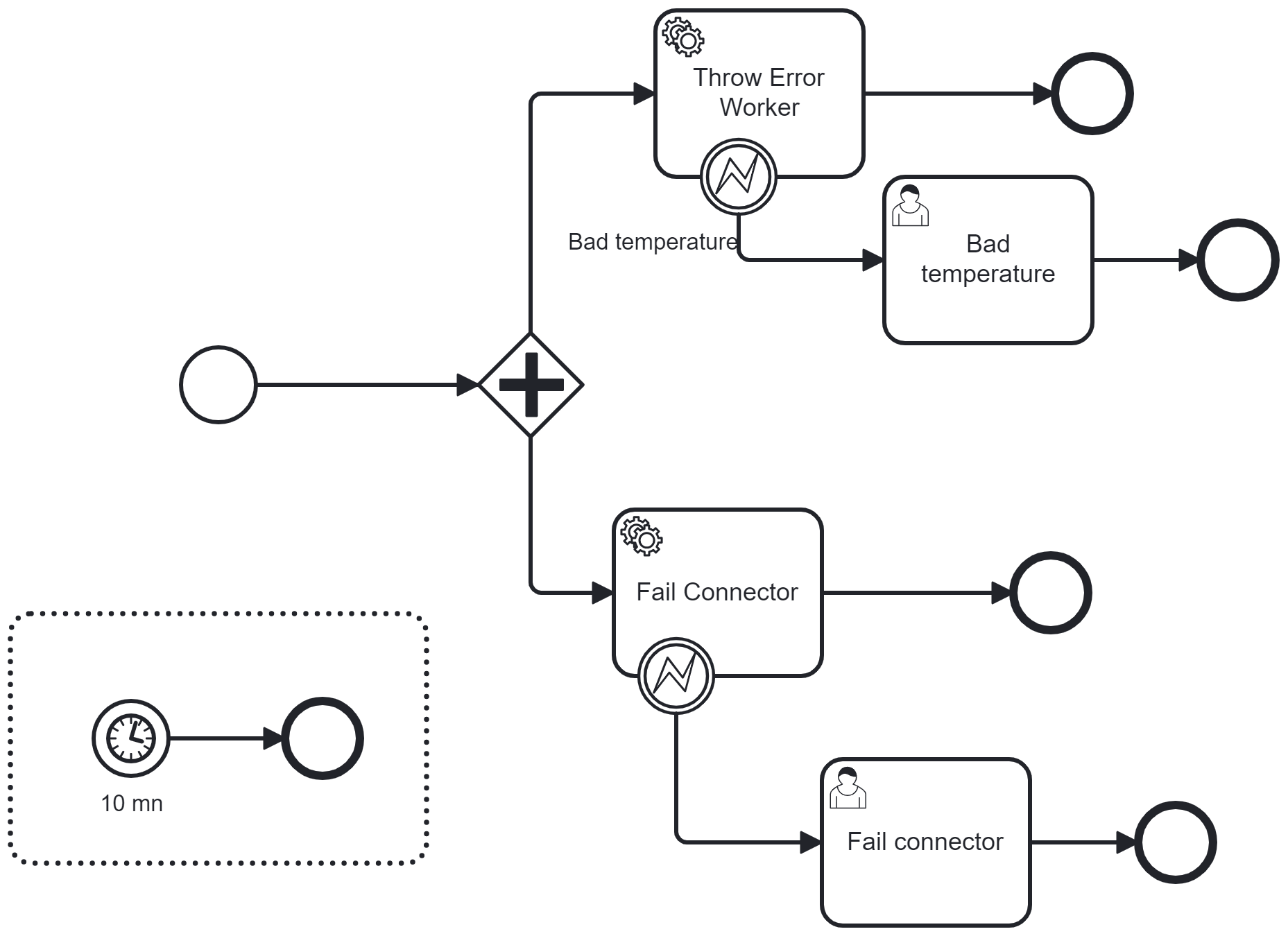In your code, you want to throw an error. Then, in the code, you want to capture this error as a BPMN error.
This project gives you the implementation of a worker and a connector.
Visit io.camunda.connector.errors.explicitworker.FailExplicitWorker
In a worker, the BPMN error must be thrown explicitly via the code.
jobClient.newThrowErrorCommand(activatedJob.getKey())
.errorCode(ERROR_BAD_TEMPERATURE)
.send();The worker can decide if the jobs will fail via the code.
jobClient
.newFailCommand(activatedJob.getKey())
.retries(activatedJob.getRetries()-1)
.errorMessage("BadTemperature")
.send();The connector code has only one possibility: throw an exception
throw new ConnectorException(ERROR_BAD_HUMIDITY, "Weather is rainy");The runtime is responsible for transforming this exception into a BPMN error or failing the task. For example, the Connector Runtime failed the task on a ConnectorException.
The connector runtime searches if an Error Expression (name errorExpression is defined on Headers.
If an expression exists, then it is executed. This FEEL expression must be defined to transform the error in a BPMN error:
bpmnError(error.code, error.message)
This field is often added in the element's template as a hidden field, so when you use the template, you don't see it. If you want the connector to fail instead of throwing a BPMN error, unlink the template and remove that field.
Note: in case of a failed task, the connector can't pilot the number of retries, and the task fails immediately
If your code needs more control, decide to Fail, or throw an exception, the worker API offers more options. In a worker, it's possible to fail x times and then thrown an exception.
The connector framework does not have all these options; it just throws an exception. It is the runtime that hosts the connector to decide what to do.
Deploy the ThrowsErrors.bpmn process on a server and create a process instance.
Change the application.yaml file, giving the correct properties to contact your cluster
Start io.camunda.errors.ErrorApplication. This class uses the connector runtime library.

